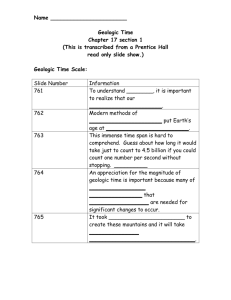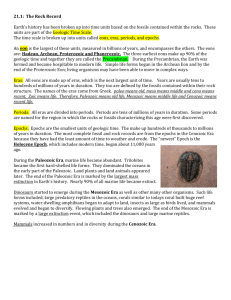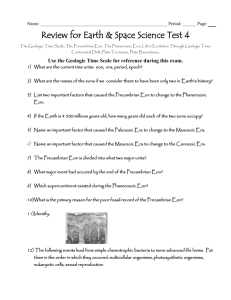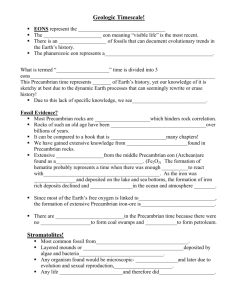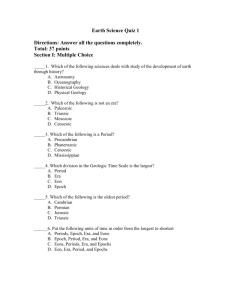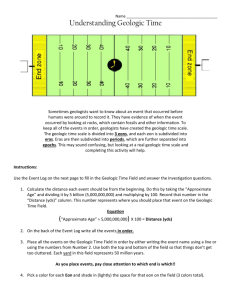Geologic Time - Local.brookings.k12.sd.us
advertisement
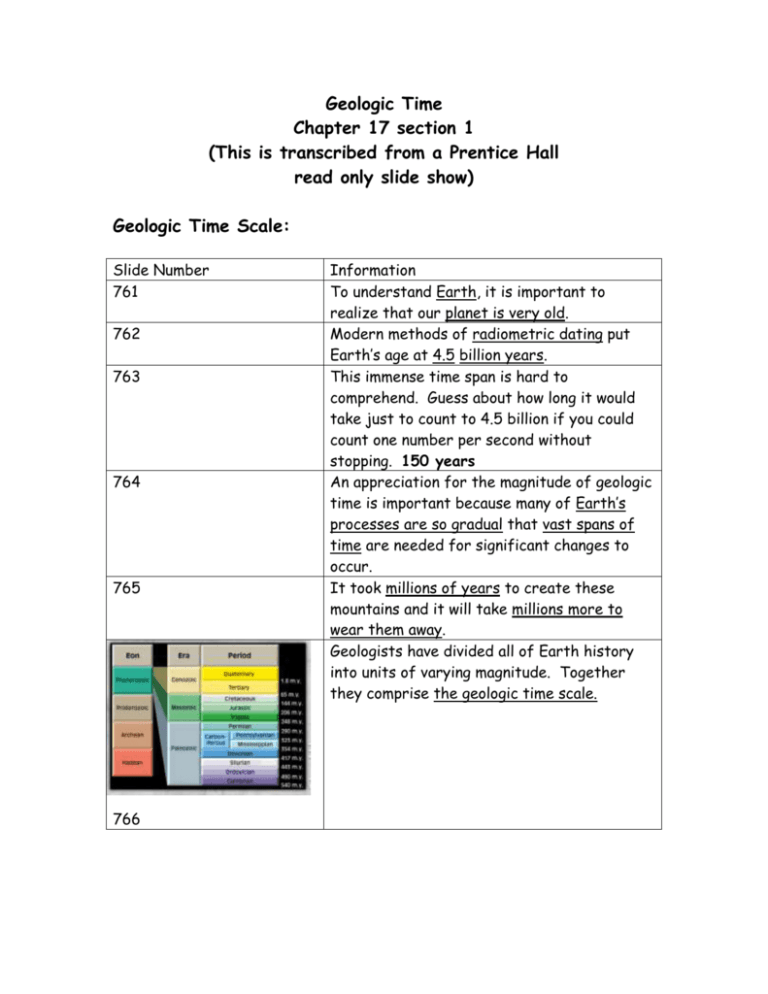
Geologic Time Chapter 17 section 1 (This is transcribed from a Prentice Hall read only slide show) Geologic Time Scale: Slide Number 761 762 763 764 765 766 Information To understand Earth, it is important to realize that our planet is very old. Modern methods of radiometric dating put Earth’s age at 4.5 billion years. This immense time span is hard to comprehend. Guess about how long it would take just to count to 4.5 billion if you could count one number per second without stopping. 150 years An appreciation for the magnitude of geologic time is important because many of Earth’s processes are so gradual that vast spans of time are needed for significant changes to occur. It took millions of years to create these mountains and it will take millions more to wear them away. Geologists have divided all of Earth history into units of varying magnitude. Together they comprise the geologic time scale. The time scale provides a framework for arranging events of the geologic past. 767 768 769 770 771 772 Eon represents the greatest expanses of time. The eon that began about 540 million years ago is called the Phanerozoic, Greek for “visible life”. The sedimentary rocks and deposits of Phanerozoic eon contain an abundance of fossils. The Phanerozoic eon is divided into units called eras. The era names refer to import differences in dominant life-forms. Paleozoic refers to ancient life. Example Trilobite fossils. Mesozoic refers to middle life. Cenozoic refers to recent life. 773 Each era is divided into smaller units called periods. 774 The changing fossil record also played an important part in establishing each of the periods. Periods may be divided into epochs. Seven epochs are names for the periods of the Cenozoic era. 775 776 777 778 779 The epochs of other periods usually are just termed early, middle, and late. The Pleistocene epoch, which ended just 10,000 years ago, coincides with a time span commonly known as the ice age. The detail on the time scale does not begin until about 540 million years ago, the date for the start of the Cambrian Period. The vast expanse of time prior to the Cambrian Period is divided into three eonsthe Hadean, the Archean, and the Proterozoic. This greater than 4 billion-year span is also commonly called the Precambrian. 780 781 782 783 784 785 786 787 788 789 790 791 792 793 794 795 About what percent of Earth’s 4.5 billion-year history is represented by Precambrian time? 88% Why are the eons of Precambrian time not divided into numerous eras and periods? One reason is that Precambrian life was softbodied and therefore the fossil record is meager compared to the Phanerozoic eon. In addition, much of the Precambrian rock record is buried beneath younger rocks and/or altered by metamorphism. The Grand Canyon’s ancient Vishnu schist is buried beneath a huge pile of Paleozoic rocks. Which is the greatest expanse of time? eon Which is a subdivision of an epoch? None of these Mesozoic is an example of era. Eons are divided into these era. Which is the smallest time span on the geologic time scale? epoch Cambrian and Jurassic are examples of period. The age of the Earth is about: 4.5 billion years The Phanerozoic eon began about years ago. We are presently living in the Cenozoic era. The Hadean, Archean, and Proterozoic are: eons that collectively comprise the Precambrian. Which era of the Phanerozoic eon has the most periods? Paleozoic 796 Eocene, Pleistocene, and Holocene are examples of: epochs
